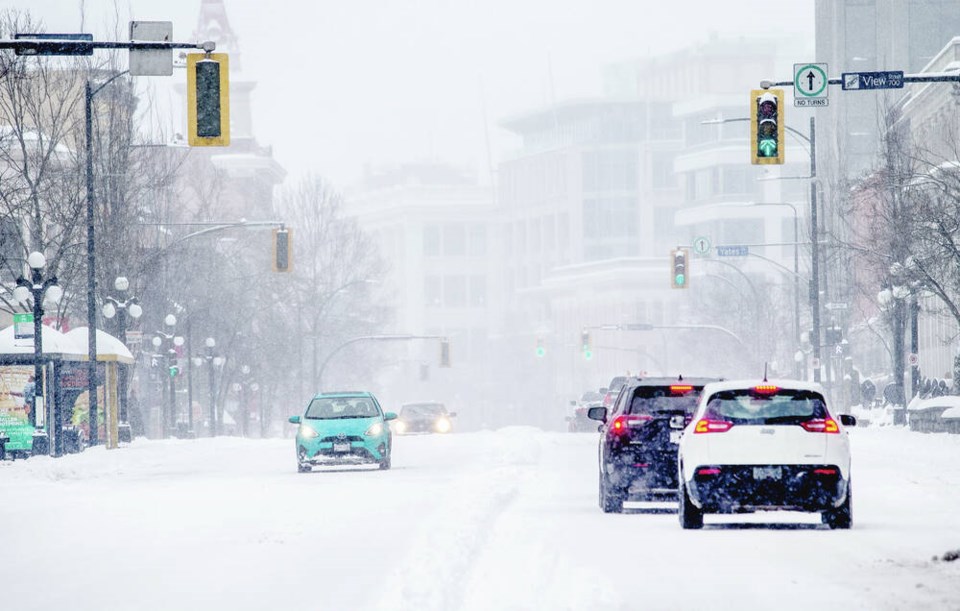They are the Christmas gifts we never think about, the best kind because they keep on giving. We do take them for granted as they’ve been with us for so long — like that creepy Santa doll in the bottom of the decorations box. Yet they are things that changed our driving lives forever.
Okay, so they’re not really gifts. Humbug. We all paid for these things one way or the other, but in a sense they are special presents to ourselves. They have saved countless lives and prevented so many injuries on our roads. What better gift?
So here’s a road-safety Christmas list:
Painted lines — They seem so fundamental to our driving culture that we couldn’t imagine driving without them. Yet there was a time before painted lines.
Larger and more powerful cars led to steadily increasing speeds through the 1920s and ’30s, and with it head-on crashes and scores of fatalities.
The simple concept of dividing a roadway with a painted line and then making lines into various configurations and colours was a game-changer. Lines created rules that separated vehicles, directed traffic flow, required drivers to signal and kept people on course, saving thousands of lives since their introduction.
Street lights — Gas-lit streets had been part of urban infrastructure for over 100 years, but with the advent of electricity, just as faster, more powerful vehicles were hitting the streets, the need for better lighting was immediately understood.
At the start of the Second World War, Britain imposed strict blackout conditions to stymie German bombing campaigns. By the end of the first month alone, authorities attributed 1,130 civilian traffic deaths to the lack of light.
Illuminated streets have made it way more safe for everyone on or near the road.
Road signs — You can have all the GPS and technical guidance in the world, but there is nothing more reassuring than a simple telling you to stop, turn (or not), yield or how much further you have to go.
The first road signs were simple stones with markings on them erected by Egyptians and Romans way back when. Salvador Street in Lisbon claims the first “modern” style sign, which reads: “Year of 1686. His Majesty commands that coaches, seges and litters that are coming from the gateway of Salvador Street return to the same way.”
Traffic lights — The consensus is that the first traffic-control signal went up in London, England, in 1868 at the corner of Bridge Street and Great George Street. But it blew up one day when the gas used to light the lamps ignited, injuring the cop controlling it. The idea was dropped for a while, but inventors worldwide recognized the value of the concept.
By the 1920s, electrically operated signal lights were popping up throughout Europe and North America. Today we couldn’t imagine a driving world without them.
Guard rails — I love those old-time B.C. history photos showing narrow roads carved through mountains or canyons. Wide-open spaces and not a guard rail to be seen anywhere.
Why did it take so long to place a barrier between you and a 100-metre drop? But today countless lives have been saved by them being there.
The seatbelt — Nils Bohlin of Volvo is credited with the first three-point seatbelt design in 1959. The concept was simple. By belting a human body into a seat — that body will match the sudden loss of velocity a car goes through when it crashes into something. The result is that you are no longer thrown into a steering wheel, through a windshield or into a door post.
Seatbelts have generally been mandatory since the mid-1970s, with tens of thousands of lives saved and injuries prevented as a result.
The administrative driving prohibition — Brought in by the province in September 2010, this process took most of the impaired-driving burden out of the criminal-court system and placed it in the hands of administrative tribunals.
More importantly, it gave the cops the power to issue lengthy roadside prohibitions and the power to seize vehicles on the spot.
While the breathalyzer was itself a huge innovation in taking drunks off the road, it was always a cumbersome and technicality-ridden process that clogged the court system.
Serious impaired cases involving injury and death still go before a criminal court, but the proof of administrative sanctions is in the Christmas pudding — a 40-50% reduction in impaired driving fatalities on our roads.
There could be many other life-savers on the list — headrests, backup cameras or rumble strips. But regardless of how many innovations are out there, a life saved or an injury prevented has to be the top item on anyone’s list, Christmas or not.



